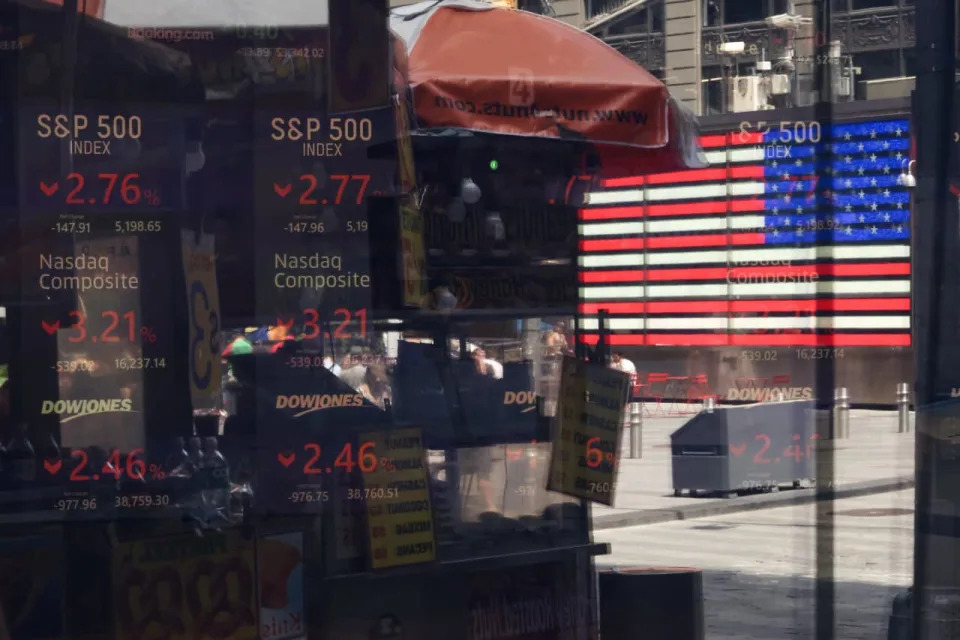Traders are loading up on protection against extreme moves as stocks zoom higher

Investors are buying up crash protection for their portfolios even as a sizzling postelection rally shows few signs of slowing down.
The Cboe Skew Index, which measures options traders’ demand for tail-risk hedges, has risen sharply since Nov. 12, when it touched a post-election low. The index closed above 167 on Monday, its highest reading in more than two months, according to LSEG data.
A spike in demand for downside protection doesn’t necessarily mean traders are bracing for a crash. More likely, they are simply trying to protect their portfolios from any last-minute turbulence after a blockbuster year for the market, said Danny Kirsch, head of options at Piper Sandler, during an interview with MarketWatch.
“A lot of funds have had good years, and a lot of them just want to protect their gains,” Kirsch said.
Investors are almost universally bullish heading into the end of the year and beyond, Kirsch said.
And they have good reason to be, at least in the near term: As one Goldman Sachs Group strategist pointed out in a recent note , the final four weeks of the year are historically one of the strongest periods for stock-market returns.
Still, some risks have started to re-emerge over the past couple of weeks, threatening to throw a last-minute wrench into the works while raising the possibility that markets could turn rocky again in early 2025.
Geopolitical tensions flared as Ukraine used U.S.-supplied missiles to attack Russian territory.
Inflation data released on Wednesday affirmed that the pace of inflation’s decline appears to have stalled, raising more doubts about whether the Federal Reserve will move ahead with another interest-rate cut in December.
And on Monday evening, President-elect Donald Trump gave investors a taste of what early 2025 might hold when he threatened in a post on Truth Social to slap tariffs on Canada, Mexico and China immediately after returning to the White House.
Although U.S. markets were largely spared, the dollar rallied sharply against the currencies of Canada and Mexico, while stocks trading in those countries came under pressure.
For investors, it was a reminder that the return of Trump could usher in more volatility to markets, even as Wall Street widely expects that his pro-business agenda will help push the S&P 500 SPX even higher, Kirsch said.
“There’s still clearly some demand for downside hedges. It’s geopolitics, it’s 2025 risks getting pulled forward, you have the [Federal Open Market Committee],” said Maxwell Grinacoff, head of U.S. equity derivatives research at UBS Group.
Grinacoff pointed out in a report shared with MarketWatch that a measure known as skew, which gauges demand for bearish puts relative to bullish calls, has been rising recently for contracts tied to the S&P 500.
“There’s this confluence of factors, and investors are saying, ‘we had the postelection exuberance, that was fun, but now the party is over and we need to think three to six months ahead and figure out what this actually means for the Fed and the economy,’” Grinacoff said in an interview with MarketWatch.
U.S. stocks were set to finish lower on Wednesday, with the S&P 500 set to snap a seven-day winning streak. The index was off 0.3% at 6,002 in recent trading, while the Dow Jones Industrial Average DJIA was off by 102 points, or 0.2%, at 44,753.
The Nasdaq Composite COMP fell by 120 points, or 0.6%, to 19,055.
Still, both the S&P 500 and the Dow were on track for their best performance in a year in November, with the former up more than 5% so far this month, while the latter was up more than 7%, Dow Jones Market Data showed.

